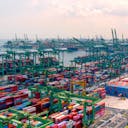It is important for international shipping and trade that the industry is equipped to move away from paper-based processes towards digitalisation. DCSA supports this transition through digital standards that enable platform interoperability so that data and documents can be exchanged seamlessly by all links in the supply chain. DCSA’s data and process standards for an electronic bill of lading (eBL) are a significant step along this journey. The eBL will minimise the need to exchange physical bills of lading as proof of ownership, receipts for shipped goods and records of agreed terms and conditions.
To this end, DCSA has completed a proof of concept (PoC) trial with platform providers, testing eBL interoperability through the full bill of lading lifecycle using data mirroring a live shipment.This article is part of a series, discussing the PoC with participants. In this article, we hear from Alejandro Pernias, CEO of web-based platform edoxOnline. We began by asking:Why do you think the eBL PoC interoperability collaboration is important?
eBL interoperability will enable the secure, fast and convenient transfer of title documents between parties using different platforms. The many transactions involved in international trade take place across different platforms, so interoperability will be the only way to speed up eBL adoption worldwide and move away from inefficient paper processes.eBL adoption is key for international trade and it brings many benefits to stakeholders. In the past years, we have seen isolated efforts to raise awareness of the importance of an eBL, but collaboration is the only way we will achieve interoperability and thus maximise benefits.What results have you seen so far?
A significant milestone was reached in October this year when we achieved interoperability between two leading eBL solutions, underpinned with blockchain technology. This was an unparalleled event for global trade when the complete process, from data input to drafting and transferring the eBL from one platform to the other, took only five minutes. Considering this would normally take more than a day, that is very significant.Without interoperability, it is quite cumbersome for the many stakeholders to carry out processes across different platforms. Instead, we can move data from one platform to the other in minutes. This was the result of multiple efforts, coordinated by the DCSA initiative.What are the lessons learned during this PoC?
First of all, that interoperability between platforms is possible. There are, of course, challenges to sort out, in terms of technology standardisation, legal frameworks and industry acceptance, but participating, and sharing knowledge, in the way we have is central to achieving the aim. When we met in the Netherlands, there was a fantastic synergy between the different participants as we shared information and raised questions. It was very important for all of us to be involved in a project like this.What are the benefits to your customers once we achieve platform interoperability?
Interoperability will, among other things, help speed-up eBL adoption dramatically. That will mean documents cannot be lost, stolen or forged, courier expenses can be avoided, as can letters of indemnity issued for non-presentation of BLs when vessels arrive. eBL records are immutable and secure because of blockchain technology; authenticity can easily be verified online. There are many benefits – reducing manual processes, improving visibility, process track and trace and, of course, the environmental benefits of reducing how much paper is used and transported.What does a fully interoperable eBL mean for international shipping and trade?
Fully interoperable eBL means that digital data is able to seamlessly pass from one platform to others, enabling automation, ensuring consistency and streamlining the trade process from end to end.Has anything come out of this PoC experience that was perhaps unexpected or rewarding that you want to share with the industry?
Stakeholders have started talking about the best way to achieve interoperability across different platforms. That’s been challenging, but there is no doubt that the only way to make it happen is through collaboration, integration and knowledge sharing. What we all want is to speed up adoption to benefit the entire community.For more information on DCSA data and process standards for the bill of lading (B/L) visit the DCSA electronic bill of lading page.
Digitalise the container shipping industry
At DCSA, we envisage a digitally interconnected container shipping industry in which customers have a choice of seamless, easy-to-use services that provide the flexibility to meet their business and sustainability goals.









